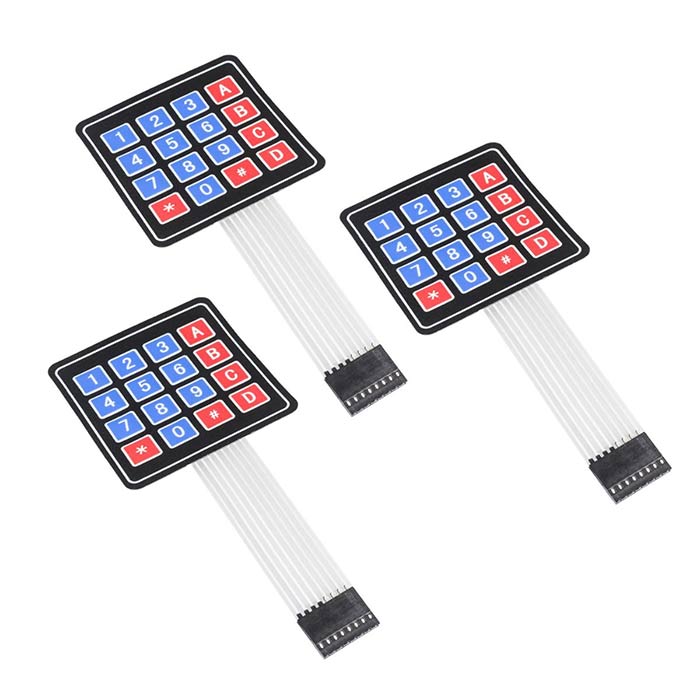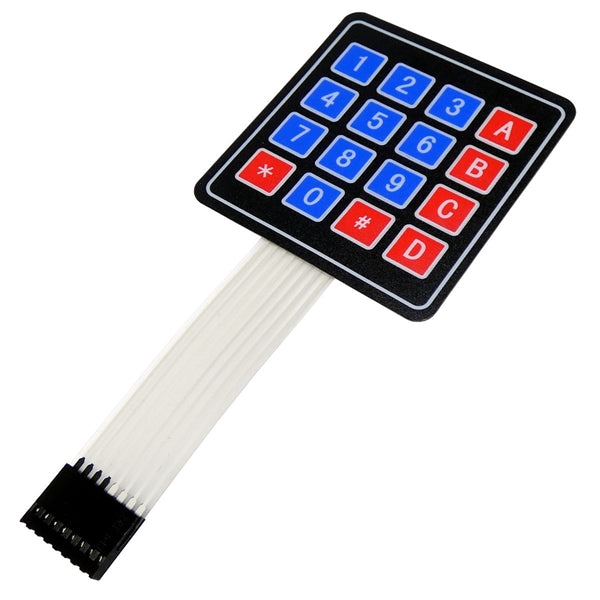You’ll notice the difference when working with a premium membrane switch manufacturer.
What to Look for When Picking a Membrane Switch for Your Task
When you're picking a membrane layer switch for your job, a number of essential elements come into play. You'll require to think of the products, design, and how well it aligns with your brand name. Sturdiness and usability are vital, yet so is the credibility of the supplier. Comprehending these elements can assist you make an informed decision-- one that balances quality and cost effectively. Allow's explore what you must think about to guarantee your option meets all your job requires.
Comprehending Membrane Switch Over Elements
When you plunge into the globe of membrane switches, it's crucial to grasp the vital parts that make them operate. Below that, the spacer layer assurances there's sufficient distance between the circuit and the overlay, allowing the switch to trigger without constant pressure.
Recognizing just how these layers work with each other helps you choose a membrane button that's trustworthy and fits your project needs. Pay close attention to the density and material of each layer, as these factors affect durability and capability in various atmospheres.
Product Choice and Its Effect
Selecting the best materials for your membrane button can significantly affect its performance and long life. The choice of substratum, usually polyester or polycarbonate, affects sturdiness and adaptability. Polyester is much more abrasion-resistant, while polycarbonate supplies much better quality and strength.
Following, consider the adhesive. It requires to hold up against ecological aspects like moisture and temperature changes. A strong sticky warranties that your membrane switch stays undamaged gradually.
Don't forget about the visuals overlay. The printing method made use of, whether silkscreen or digital, affects the button's visual appeals and durability. High-quality inks will certainly stand up to fading and damaging, keeping an expert look.
Last but not least, consider environmental conditions. If your gadget will be exposed to extreme chemicals or severe temperature levels, pick products made to sustain these difficulties. Your options in products will ultimately identify the button's integrity and user complete satisfaction.
Layout Factors To Consider for User Experience
Picking the best materials lays the foundation for a successful membrane button, however the style likewise plays a considerable role in customer experience. You'll wish to assess exactly how the design affects usability (membrane switch manufacturer). Maintain buttons and icons instinctive and well-spaced, making it very easy for customers to browse without confusion

Shade and contrast are likewise important; assurance that your layout is visually appealing yet still functional. High contrast helps individuals quickly identify switches, particularly in low-light problems.
Last but not least, assess the general aesthetic. A sleek and modern layout can boost individual assumption and make your item a lot more attractive. Balancing capability with an interesting layout will certainly cause a much better user experience and inevitably, an extra effective product.

Ecological Variables and Sturdiness
When selecting a membrane switch, you require to take into consideration how it'll perform in numerous settings. Variables like temperature resistance, moisture and chemical exposure, and mechanical wear can considerably impact its resilience. Comprehending these elements will certainly help you choose a switch that withstands your particular conditions.
Temperature Level Resistance Needs
As ecological problems can vary extensively, comprehending temperature resistance is vital for making sure the sturdiness of your membrane layer button. Make sure to inspect the requirements of the materials made use of in the button, like the glue and overlay, as they straight effect efficiency. By picking a membrane button with ample temperature resistance, you'll boost its lifespan and maintain functionality in tough environments.

Moisture and Chemical Exposure
Dampness and chemical direct exposure can greatly affect the efficiency and long life of your membrane button, so it's critical to recognize the setting in which it will be used. If your job entails high moisture or direct exposure to liquids, look for safety coverings and sealants that can boost resistance to moisture. Furthermore, think about the kinds of chemicals your button might come across. Particular products can degrade when revealed to solvents, oils, or rough cleansers. Selecting the best products, like polycarbonate or polyester, can help withstand these elements. Constantly speak with the producer's requirements for chemical compatibility to assure your membrane layer switch maintains its functionality with time. By prioritizing dampness and chemical resistance, you can boost the toughness of your switch in tough environments.
Mechanical Damage
While you might prioritize features like visual appeals and capability in your membrane layer button, mechanical wear and tear can significantly affect its efficiency over time. Regular pushing can lead to deterioration of materials, creating concerns like responsive feedback loss or even change failing. Choosing a resilient button guarantees longevity and dependability, protecting against pricey substitutes and downtime in your task.
Customization Options for Branding
When it comes to branding your membrane switch, modification choices are essential. You can select layout components and shades that reflect your brand name, along with details logo positioning and size to enhance visibility. Additionally, choosing the best materials and appearances can raise the total look, making your item stick out.
Layout Components and Shades
A variety of style components and colors can make your membrane switch not just practical however additionally aesthetically appealing, enhancing your brand name identification. When picking colors, think of your brand's palette; they should reverberate with your target market and evoke the right emotions. You can also explore numerous surfaces like matte or glossy to produce various aesthetic impacts. Do not ignore textures; including a responsive element can boost individual experience and make your button stick out. Think about incorporating personalized graphics or patterns that align with your brand name message. By thoughtfully picking style elements and shades, you not only produce a product that looks great yet also enhances your branding consistently and successfully.
Logo Design Positioning and Dimension
After finalizing your layout aspects and shades, the next step is to concentrate on logo positioning and dimension. Your logo design is a vital facet of your branding, so you'll want it to stand out without frustrating various other design components. Review where your logo will be most noticeable and impactful; usual placements include the top or center of the button.
Don't neglect to ponder how the logo lines up with customer communication. This attention to detail will boost both performance and brand identity in your job.
Material and Structure Options
Picking the ideal materials and structures for your membrane button can greatly boost both its performance and aesthetic allure. You'll wish to examine alternatives like polyester or polycarbonate, as they offer sturdiness and resistance to use. The structure of the surface also plays a necessary duty; smooth her response coatings give a streamlined look, while textured surfaces can improve grip and responsive responses.
Tailoring the products and appearances permits you to show your brand identity successfully. You could pick a matte surface to convey class or a glossy appearance for a modern-day touch. Don't forget shade choices, as dynamic hues can make your button stick out, while soft tones can create an extra sophisticated appearance
Cost vs. Top Quality: Locating the Right Balance
When you're managing the alternatives for membrane layer switches, stabilizing expense and top quality can feel overwhelming. You desire to assure that you're obtaining a reputable product without damaging the financial institution. Start by recognizing your job's specific requirements. Are you focusing on durability or appearances? A lower-cost button may conserve you money upfront, but if it compromises functionality, click here for info you could face higher substitute costs later on.
Look for makers that provide a great mix of price and high criteria. Study their credibility and consumer testimonials to evaluate reliability. Often, spending a bit a lot more in high quality products can save you from future migraines.
Likewise, think about the long-lasting performance and warranty options. A slightly more costly button with a strong warranty can verify to be a smarter financial investment. Inevitably, it has to do with finding that sweet spot where you satisfy your budget plan while assuring your task's success.
Testing and Quality Assurance Protocols
While you may discover the ideal membrane button style, guaranteeing its quality with rigorous testing procedures is crucial for long-term success. Start by confirming that the supplier complies with industry criteria, such as IPC/WHMA-A -620, to assure a trustworthy item. membrane switch manufacturer. You'll desire to examine for detailed screening approaches, consisting of ecological, mechanical, and electric evaluations
Make sure the switches undergo sturdiness testing, mimicing real-world use to identify any type of prospective failings. Take notice of the supplier's top quality guarantee procedure, which must include normal assessments and i was reading this audits.

Don't forget to request for samples and perform your own tests to verify compatibility with your job. Consider just how usually the manufacturer updates their protocols; advancement in screening can lead to improved top quality. By prioritizing these screening and quality control procedures, you'll increase the possibility of an effective and resilient membrane switch for your application.
Often Asked Inquiries
Just how Long Does a Membrane Layer Change Generally Last?
A membrane switch typically lasts anywhere from 1 to 10 million cycles, depending on use and ecological factors. You'll want to consider your certain demands to guarantee it fulfills your longevity demands effectively.
Can Membrane Layer Switches Over Be Repaired if Harmed?
Yes, you can in some cases fix membrane buttons if they're damaged, yet it often depends upon the degree of the damages. Minor problems may be reparable, while much more substantial damages normally requires substitute for correct performance.
What Are the Typical Applications for Membrane Layer Switches?
Membrane buttons are commonly used in appliances, clinical devices, and vehicle controls. You'll locate them in customer electronics, commercial tools, and even gaming consoles. Their versatility makes them perfect for various interface and environments.
Exist Particular Qualifications for Membrane Switches?
Yes, there are certain certifications for membrane switches. Search for UL, CE, and RoHS accreditations to guarantee safety and compliance. These certifications suggest the button satisfies sector criteria for top quality and environmental security.
Just how Do I Make Sure Proper Installation of a Membrane Switch?
To guarantee appropriate setup of a membrane layer button, tidy the surface area extensively, straighten it thoroughly, and use even pressure. Comply with manufacturer standards for adhesive curing time to maximize toughness and performance.
Verdict
When choosing a membrane switch for your project, keep these essential elements in mind: focus on resilient materials, emphasis on user-friendly style, and think about modification for your brand. By meticulously assessing these facets, you'll assure your membrane layer switch not just satisfies your project requires but also improves individual experience and reflects your brand name identity successfully.